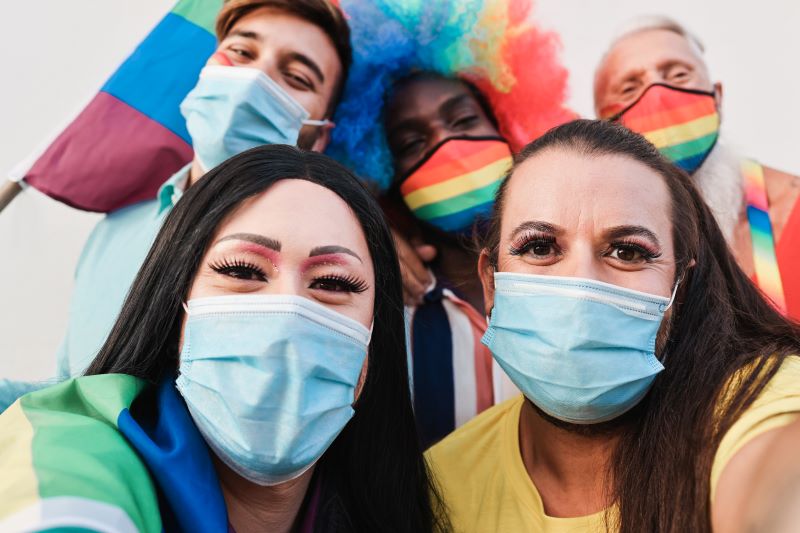Sex vs Gender: 12 Gender Identity Terms You Should Learn
How many genders are there? Just two… right? Wrong! There’s more to gender than male/female, and it’s time this binary got knocked aside. If you’re new to this, don’t worry. This list of gender terms will introduce you to the topic so you can explore your own identity and be a good ally.

Gender, like sexuality, is on a spectrum
society has become more educated and accepting, people are starting to identify with gender, as well as sexuality, in a more nuanced and individual way. In the sex vs gender debate, gender is no longer defined as the sex you were given at birth. It’s about social constructions of gender and how we, as individuals, relate to them.
Why is it crucial to learn this list of gender identity terms? For the same reasons it’s crucial to learn about sex and kink positivity!
Because it’s important to recognize the lives of people who identify outside the traditional binary. Because it’s important to let people, and ourselves, live without prejudice or stigma. Because it’s important to be inclusive and respectful.
This is not an exhaustive list of gender identities! However, it is an introduction to terms and definitions that will help you self-identify and better understand people’s experiences and the language around the topic.

12 Gender Identity Terms to Start Your Gender Education
Agender
If someone is agender it means they don’t identify with any gender identity and don’t express themselves in accordance with any gender.
Bigender
If someone is bigender it means their gender is somewhere between and simultaneously shares both male and female features.
Cisgender
Cisgender is the term for anyone whose gender identity is the same as the sex they were assigned at birth.

Gender
The word gender is worth including in this list of genders because it is often misunderstood. The sex vs gender debate is still ongoing in many circles, and it’s crucial to understand the meaning of this word before understanding different types of gender.
Gender is not the same as sex. While your sex is assigned to you at birth by way of your genitals, your gender is your lived experience of being a man, woman, somewhere between, or none of these labels.
An individual’s gender identity is based on their deep personal understanding of who they are in relation to the gender roles given by society.
Genderfluid
A genderfluid person is someone whose gender identity is not defined, but changes over time.
Gender nonconforming
Gender nonconforming is the umbrella term for anyone who goes against traditional gender expectations and stereotypes. Whether that’s by how they identify, what pronouns they use, what they wear, how they act, or any other ways they express.

Intersex
This is not a type of gender, but the term nonetheless has an important place on this list of genders.
Intersex people are those born with genitalia and physiological features that are not clearly either male or female and don’t fit into the category of either sex. Of course, intersex people can choose their gender identity.
Intergender
The term for someone whose gender is midway between female and male.
Non-binary
Non-binary is a type of gender umbrella term for anyone whose gender identity is neither wholly male nor wholly female. In other words, anyone who identifies outside the typical gender binary, whether they’re gender fluid, bigender, or another identity.

Sex
As we’ve said, in terms of sex vs gender, sex is not the same as gender. And this isn’t the kind of sex you have under the sheets, either. A person’s sex is the identity assigned to them at birth based on their genitals and chromosomes and is recognized as either male or female.
Transgender
Commonly abbreviated to “trans”, transgender is the umbrella term for anyone whose gender is different from the sex they were assigned at birth. Someone can be trans whether they have physically transitioned (with surgery and hormones) or not.
Transition
A person’s transition (not “sex change”) is the complex process undergone when someone changes the sex and gender identity they were assigned at birth. This process can involve surgery, hormone therapy, telling family and friends, changing pronouns, clothes, hairstyle, and many other features.

If you want to learn more about sex vs gender and different types of gender, take the time to research these terms and read the experiences of people whose gender identity is different from yours. You never know what side of yourself you might discover.









